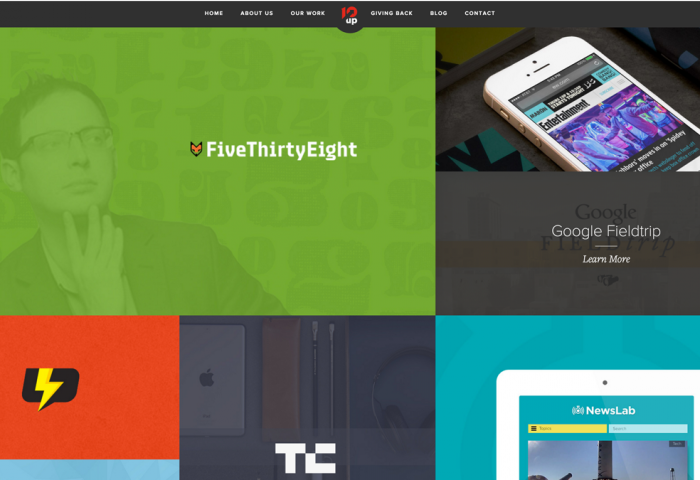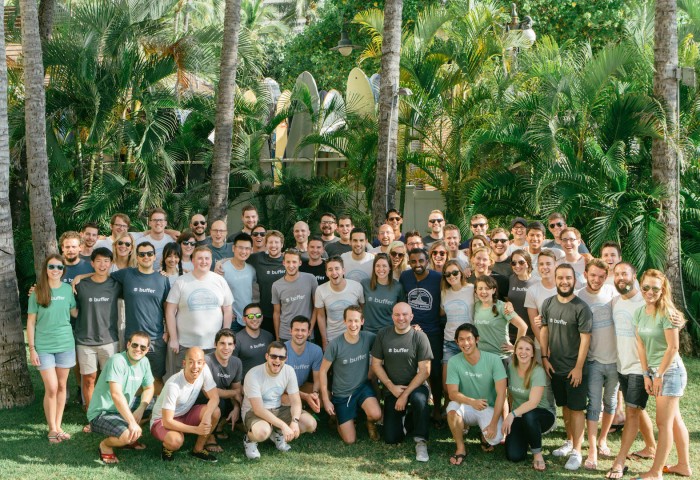We had a chance to connect with 10up and chat about how they work, their team and pro tips for being successful as a distributed company.
How many employees and contractors do you have?
10up employs over 125 full time strategists, project managers, engineers and designers from around the world.
What’s the importance of location independence at your company?
Thanks to independence from traditional “brick and mortar” offices, freedom from commutes, and flexible schedules across nearly a dozen time zones, our team works when and where they’re most inspired and can be available whenever our clients need them.
Did you start with the intention of having a distributed or nomadic team? If not, when did you decide to support people working remotely?
Since inception, we’ve always planned for 10up to operate under a distributed model. Having access to a global talent pool, especially in the fields of web engineering and design, was critical to the 10up vision. There was also a fair amount of prior art in 2011: it’s common in our industry to collaborate, particularly on open source projects, in a distributed fashion.
What are some of the challenges you face as a team without a central location or office?
As a distributed company, communicating effectively and fostering the right culture requires a structured system for frequent interactions and a commitment to building relationships with your team. We’ve made significant investments in our asynchronous on-boarding process to make sure new employees feel grounded in our culture and processes from day one. Communicating clear expectations, implementing our orientation “buddy program”, and establishing explicit transition paths after on-boarding ensures that new hires hit the ground running.
What’s the upside that comes with not having a central location or office?
Being a distributed team means we aren’t restricted on who we can hire, which gives us more access to the best talent across the globe. Our employees also have greater flexibility and can relocate without having to change jobs based on their new location. Having smart employees touting 10up in their communities all around the world helps us spread our brand further than we might if we were all concentrated in one place.
Are there important non-office workspaces in the history of building your company—a favorite coffee shop, bar or similar space?
These days most of our employees are working from home offices or co-working spaces, but during the first six months of starting 10up, I spent a lot of time working at a Starbucks in Warwick, RI on Route 2. It’s where I also interviewed one of our first five employees, Jess Jurick who is now Vice President of Client Delivery.
What % of your company regularly works remotely?
We are 100% distributed – there is no central office from which people are “remote.”
Any advice or best practices for supporting the work styles of your teammates from a distance?
It’s important to empower employees with the tools they need to successfully navigate a distributed career from their very first day on the team. Setting clear expectations through both written and verbal communication, implementing a thorough self-guided orientation project tailored to each role, providing detailed instructions for all company systems, and communicating often using tools such as Zoom (for video conferencing) or HipChat/Slack (to create a “virtual” office space) helps employees feel connected.
What types of places do your teammates choose to work from when remote?
Given that our team is always working “remotely”, 10uppers primarily work from their home office, or in a few instances, a nearby co-working space or office they rent. During times when they are traveling for industry conferences or client meetings, some will temporarily work from non-traditional office spaces like coffee shops, hotel lobbies, and airport gates.
What qualities do you look for when hiring for a distributed team?
We look for self-starters who know how to use time effectively, communicate concisely and produce high quality work. We want new employees to think of 10up as their next big opportunity: a chance to reach the next level in their careers.
What are your thoughts on Workfrom’s role in the way work is getting done – now and in the future?
Sitting in the same small home office day after day can become mundane, while spicing up your surroundings can be energizing and inspiring. Being location independent means there are always opportunities to switch things up and work from a variety of places, whether it’s in your hometown or on the road in another country. However, working in spaces outside of a dedicated home office can also be challenging without necessities like reliable Internet service and a place to make quiet calls. Workfrom has the potential to help solve that problem and become a reliable resource for workers to discover more productive work spaces around the world.
Is there anything else you’d like to share?
We think that in order to be successful as a distributed team, you have to make the decision to go all in and operate 100% under a distributed model. Hybrid models where only a select few of a company’s employees work remotely while the rest are required to work in a traditional office setting tends to create first and second class employees, and doesn’t force key personnel to place the same priority on remote collaboration tools (unless the leadership team is partly distributed – atypical in hybrid organizations).
To learn more about 10up, their product and their remote team and career opportunities, check out 10up.com.




Responses